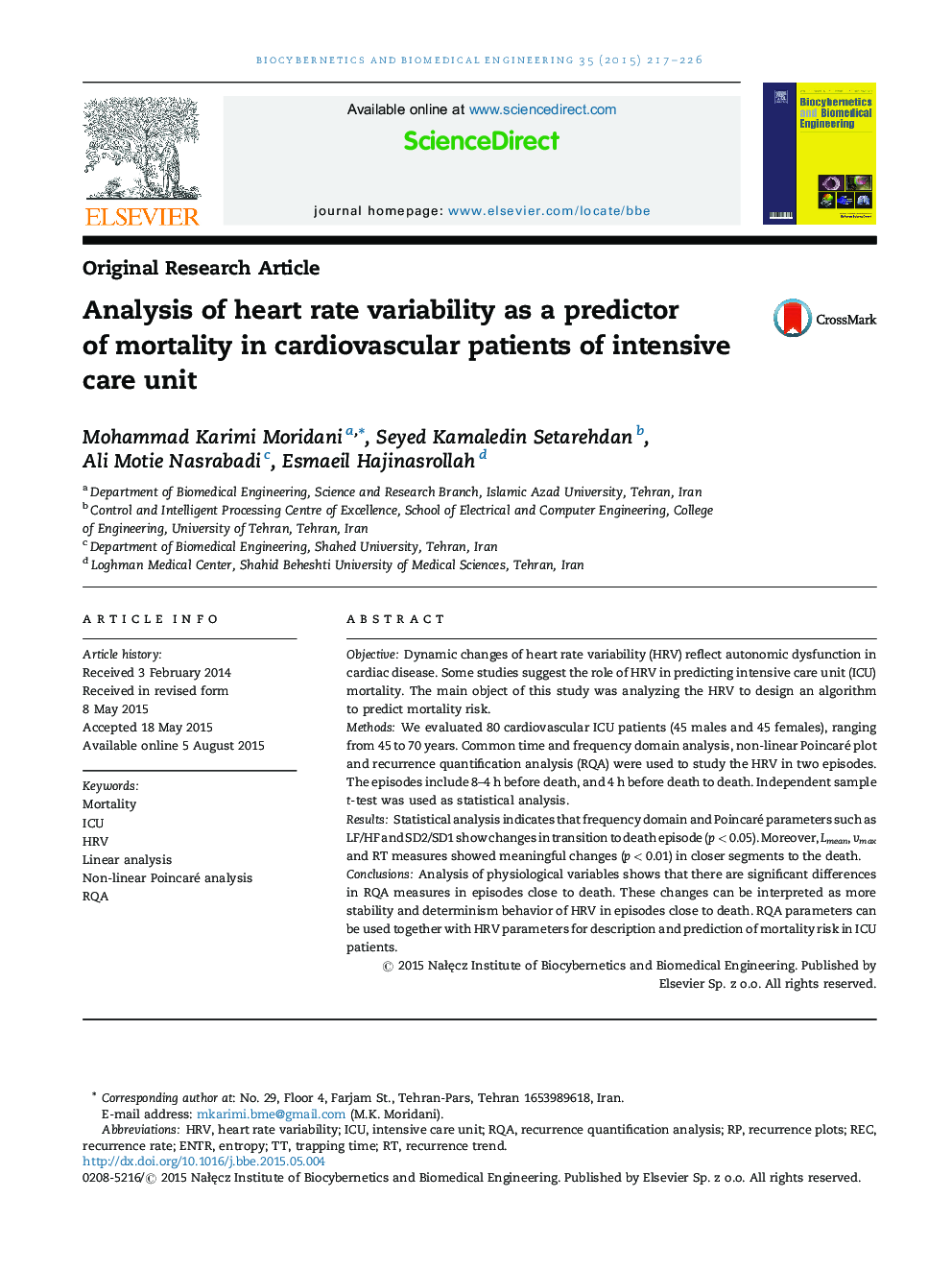| Article ID | Journal | Published Year | Pages | File Type |
|---|---|---|---|---|
| 5176 | Biocybernetics and Biomedical Engineering | 2015 | 10 Pages |
ObjectiveDynamic changes of heart rate variability (HRV) reflect autonomic dysfunction in cardiac disease. Some studies suggest the role of HRV in predicting intensive care unit (ICU) mortality. The main object of this study was analyzing the HRV to design an algorithm to predict mortality risk.MethodsWe evaluated 80 cardiovascular ICU patients (45 males and 45 females), ranging from 45 to 70 years. Common time and frequency domain analysis, non-linear Poincaré plot and recurrence quantification analysis (RQA) were used to study the HRV in two episodes. The episodes include 8–4 h before death, and 4 h before death to death. Independent sample t-test was used as statistical analysis.ResultsStatistical analysis indicates that frequency domain and Poincaré parameters such as LF/HF and SD2/SD1 show changes in transition to death episode (p < 0.05). Moreover, Lmean, vmax and RT measures showed meaningful changes (p < 0.01) in closer segments to the death.ConclusionsAnalysis of physiological variables shows that there are significant differences in RQA measures in episodes close to death. These changes can be interpreted as more stability and determinism behavior of HRV in episodes close to death. RQA parameters can be used together with HRV parameters for description and prediction of mortality risk in ICU patients.
